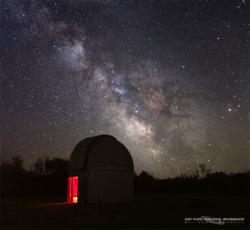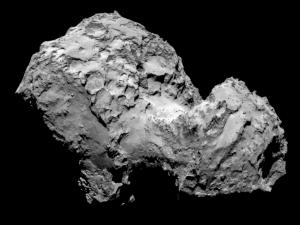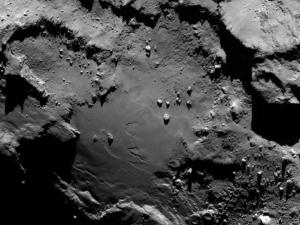
Public Stargazing
- Where:
- Frosty Drew Observatory
- When:
- Friday August 8, 2014 at 6:00 p.m.
- Cost:
- $1 Suggested Donation per Person
Tonight's weather is looking rather favorable for stargazing. With cool temps and mostly clear skies prevailing, we have a comfortable night ahead of us. The primary telescope will be focused on Saturn for the early part of the night with stunning binary stars on display later. Views of the super bright 95% waxing gibbous Moon, which is two days away from the yearly supermoon, will be available in our portable telescopes around the grounds. Though the Moon will dominate the night sky, we will also showcase an impressive list of stunning binary stars visible in the Summer sky. We plan to get things going at 6:00 p.m. with live views of the Sun and solar photosphere. In view will be numerous sunspots including notable sunspots 2132 and 2135. Once the Sun sets, we will switch over to the night sky. The show will rock on until the early morning hours, around 1:00 a.m. - 2:00 a.m. after which I am sure the Moon will kick us out.
Tonight's fair weather will surely make for a nice night under the stars, though the bright Moon will restrict our views of pretty much everything aside from the Moon, Saturn, and a few binary stars. If the Moon is your digs, then tonight is your night. Otherwise, the skies will be limited and not very photogenic.
-------------------------------------------------------------------------
Weekly Happenings
Scott MacNeill
This past Wednesday (August 6th) history was made when the European Space Agency (ESA) Rosetta spacecraft inserted itself into orbit around Comet 67P/Churyumov–Gerasimenko. Rosetta left Earth on March 2, 2004, commencing its 10 year mission through the Solar System. Its target: the comet 67P/Churyumov–Gerasimenko (67P/C-G), which has an orbital period around the Sun of 6.45 years. The mission: To rendezvous with comet 67P/G-C, acquire orbit around the comet, deploy the Philae lander to the comet's surface, accompany the comet around the Sun (perihelion) then back out to the outer Solar System. Once attached, Rosetta and Philae will monitor changes to the comet and produce a full inventory of organic chemicals that exist in the comet. With a specific search for left-handed amino acids, the building blocks of life on Earth.
Well on Wednesday, Rosetta became the first spacecraft to acquire orbit around a comet. The images coming back from Rosetta are mind blowing and, though we are ten years in, the adventure is just beginning. Over the next few months, Rosetta will survey the comet for a suitable landing site. With a deployment date slated for November, the Philae lander will touch down on the comet's surface and begin collecting data.
This mission is such an amazing moment in history. We have pushed the boundaries of human experience and ability with the premise of discovering our origins. Comet's are remnants of a young Solar System and hold so many clues to the history of the Solar System, planet Earth, and us. We are about to open a trove of discoveries as Rosetta becomes the first spacecraft not only to orbit a comet, but to land on a comet's surface and follow it around the Sun.
Keep up with the Rosetta mission and feel the buzz of awesome new science.
On Sunday night, the annual supermoon will occur, which is the largest and brightest full Moon of the year. Since the Moon does not have a perfectly circular orbit, the Moon experiences a close point (perigee) and far point (apogee) in its orbit around Earth. When the perigee happens to fall inside a 24 hour period of the full lunar phase, we call it a supermoon. This Sunday, the full Moon will occur at 2:09 p.m. with the Moon reaching perigee at 1:44 p.m. at a distance of 221,765 miles. Which is 12.2% closer than the full Moon was at its furthest on January 16, 2014. This supermoon will also be the closest Lunar perigee of the year, regardless of lunar phase. If there ever was a super Moon, this is the one, as it will be the closest of the year and happening within a half hour of the full lunar phase. As such, Frosty Drew Observatory will be open on Sunday night to celebrate the supermoon, starting at sunset and continuing until midnight. Get out there and bask in the light of the super-crazy, super-bright supermoon.
-Scott


